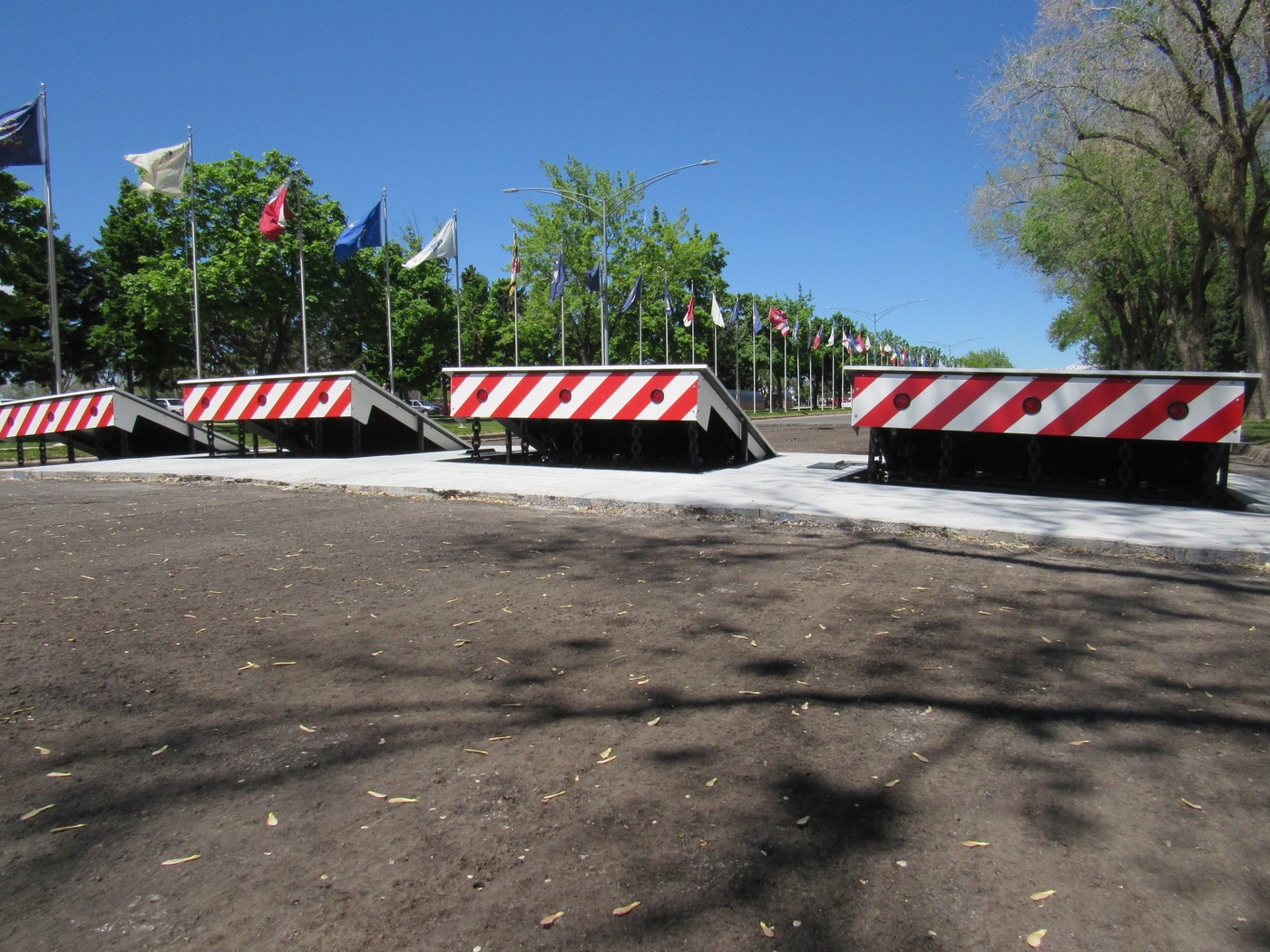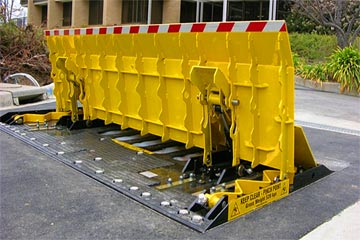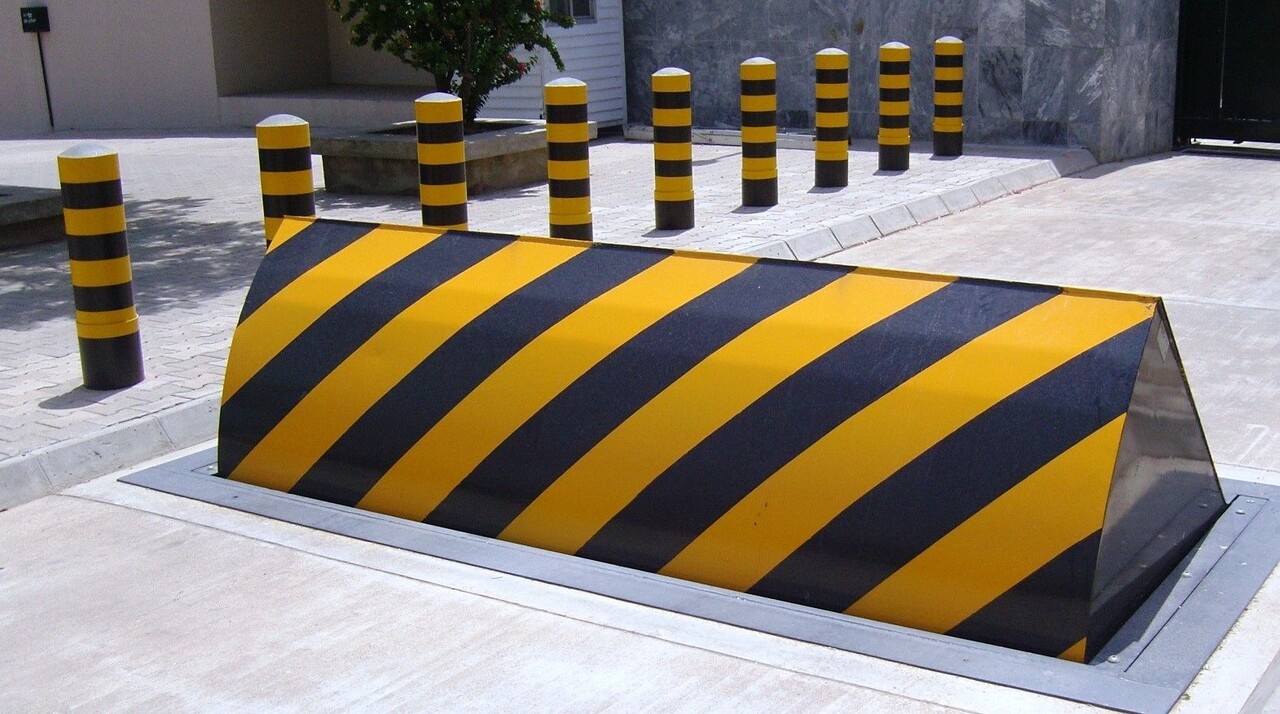The Ultimate Guide To Wedge Barriers
Table of ContentsWedge Barriers Things To Know Before You BuyThe smart Trick of Wedge Barriers That Nobody is Talking About


18 might be done more swiftly, easily, and price efficiently. FIG. In certain embodiments, the anchor 30 might be a steel structure including plates, beam of lights(e. g., I-beams ), and/or various other frameworks that are secured within the structure 14, which might be concrete. At the surface area 12, an upper side 28 of the anchor 30 may go to least partially exposed
, consequently enabling the accessory of the barrier 10 to the support 30. g., threaded holes)in several beam of lights or plates of the support 30 may be subjected to the surface area 12. In this way, bolts 32 or other mechanical fasteners might be made use of to safeguard the barrier 10 to the anchor 30. As the barrier 10 is mounted to the surface area 12 of the foundation 14, collection of particles and other product below the obstacle might be minimized, and components of the bather 10 might not be exposed to below grade settings. As indicated by reference character 52, the training system 50 includes elements got rid of underneath the wedge plate 16. The elements 52 underneath the wedge plate 16 may include an electromechanical actuator, a cam, one or more camera surfaces, and so forth. Furthermore, the lifting system 50 consists of a spring setting up 54
The springtime rod 58 is combined to a camera(e. g., webcam 80 revealed in FIG. 4) of the training mechanism 50. The springs 60 disposed concerning the springtime pole 58 are held in compression by springtime supports 62, including a repaired spring assistance 64. That is, the set springtime support 64 is taken care of about the structure 14 and the rest of the bather 10.
The Main Principles Of Wedge Barriers
The continuing to be pressure applied to
the cam camera deploy the wedge plate 16 may might provided by an electromechanical actuator 84 or other various other. The springtime assembly 54 and the actuator 84(e. Wedge Barriers. g., electromechanical actuator)may operate with each other to convert the cam and raise the wedge plate 16.
As mentioned above, the springtime assembly 54 exerts a constant pressure on the cam, while the electromechanical actuator may be controlled to put in a variable pressure on the cam, therefore enabling the training and reducing( i. e., releasing and retracting )of the wedge plate 16. In specific original site embodiments, the continuous pressure used by the springtime assembly 54 may be adjustable. g., electromechanical actuator) is disabled. As will certainly be appreciated, the springtime setting up 54 may be covered and safeguarded from particles or various other components by a cover plate(e. g., cover plate 68 received FIG. 4) that may be significantly flush with the elevated surface area 38 of the foundation 14. As mentioned above, in the deployed placement, the wedge plate 16 offers to obstruct access or travel beyond the obstacle 10. The barrier 10(e. g., the wedge plate 16 )may block pedestrians or cars from accessing a building or path. As reviewed above, the barrier 10 is attached to the anchor 30 protected within the structure 14,

front brackets 71. Therefore, the link assemblies 72 might pivot and rotate to enable the collapse and extension of the linkage assemblies 72 during retraction and deployment of the bather 10. The affiliation settings up 72 reason movement of the wedge plate 16 to be limited. For instance, if a lorry is taking a trip towards the released wedge plate 16(e. For instance, in one circumstance, the safety legs 86 may be prolonged duringmaintenance of the obstacle 10. When the safety legs 86 are deployed, the safety and security legs 86 support the weight of the wedge plate 16 against the surface area 12. Because of this, the training mechanism 50 may be shut down, serviced, removed, replaced, and so forth. FIG. 5 is partial perspective view of an embodiment of the surface-mounted wedge-style obstacle 10, highlighting the web cam 80 and the camera surface areas 82 of the lifting system 50. Particularly, two cam surface areas 82, which are described as reduced camera surfaces find more info 83, are positioned listed below the camera 80. The lower web cam surface areas 83 may be taken care of to the surface 12 (e. For example, the reduced web cam surfaces 83 and the mounting plate 85 may create a single piece that is safeguarded to the support 30 by bolts or various other mechanical bolts. Additionally, two web cam surface areas 82, which are referred to as top web cam surface areas 87, are positioned over link the camera 80 and combined to (e. In other personifications, interfering layers or plates might be positioned in between the surface area 12 and the reduced webcam surfaces 83 and/or the wedge plate 16 and the top camera surfaces 87 As mentioned over, the camera
80 translates along the web cam surfaces 82 when the wedge plate 16 is raised from the pulled back position to the released position. In addition, as pointed out above, the springtime assembly 54 (see FIG. 3 )may supply a force acting upon the webcam 80 in the instructions 102 by means of spring rod 58, which may reduce the pressure the electromechanical actuator 84 is required to put on the cam 80 in order to activate and lift the wedge plate 16. 1 )to the deployed position(see FIG. 4). As revealed, the cam 80 consists of track wheels 104(e. g., rollers), which contact and equate along the web cam surfaces 82 throughout procedure.